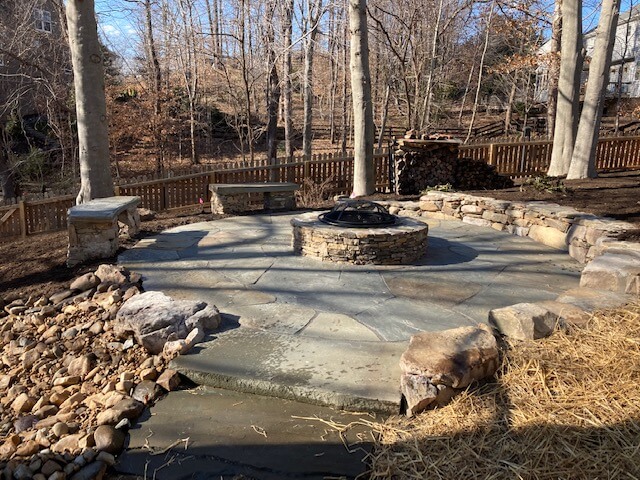Care Instructions
Plant Material
Remember that plants are living and require special care. Once we install your landscape you have the responsibility for the continued health and vigor of the plantings. The following general instructions will help you enjoy and maintain your investment. The following should serve as a general reference–every situation is different and simply requires regular oversight and care.
WATERING
Check new plantings daily for the first two weeks. Thereafter, plants should be checked two to three times per week. Simply dig around the root zone with your fingers to a depth of 2-3” for small plants and 6-8” for larger ones and trees. Water generously when the soil feels dry to the touch.
Slow, deep watering is preferred. This type of watering is accomplished by placing the hose at the base of a plant, at a heavy trickle, and water 5-10 minutes for small plants, longer for larger plants, while moving the hose in a few locations around the plant base.
When the soil feels moist, do not water. Soil must be allowed to dry out between watering. If a plant is maintained in constantly moist soil, the plant’s health will deteriorate over time. A plant weakened by over watering may die of oxygen deprivation or become susceptible to pest and disease.
Monitoring water requirements frequently is more important than watering frequently. Monitor your plants regularly for the first 1-2 years. Plants close to buildings where heat may reflect and plants under roof eaves may require closer monitoring. During the hot, summer months, disregard natural rainfall as the rain produced during these periods produces mostly runoff and contributes little, if any, to increasing ground moisture.
MULCHING
Maintain a 3” mulch layer of organic mulch. We DO NOT recommend any dyed material or biproducts of construction debris. Properly mulching will help to preserve ground moisture and prevent weeds. Excess amounts of mulch and the wrong type of mulch can result in poor air circulation for roots, reduce plant vigor and can cause pest and disease issues.
FERTILIZATION
We recommend using a balanced fertilizer (i.e., 3-4-3 organic) plant food with micronutrients. Be sure to follow label instructions.
PESTS/DISEASE
Be observant of changes in plant vigor and growth. Plants are more susceptible to disease and pests if they are weakened through poor maintenance practices such as over or under watering. It is good to make it a practice to walk your landscape and observe your plants’ progress so you can spot systems of disease or insect infestations well in advance of any serious problems.
PRUNING
Pruning is required at times for plant health and aesthetics. We can provide this service for you and will gladly provide an estimate as needed. It is extremely important to know when and how much you can prune. All plants are different so please do your research or ask us.
SOD
Newly installed sod is extremely perishable. Since it is not warrantied, it is important to care for it properly and providing it with enough water. It is hard to over water sod. Keep it wet for 14-21 days depending on time of year. Every day pull back a corner of sod in different sections of the yard and make sure the moisture you are providing is getting to the media beneath. The media under the sod should be wet as well. If it is not, then you are not providing enough moisture to the sod. Please wait at least 14 days till mowing.


HARDSCAPES
All hardscapes can be lightly power washed. Please consult with a hardscape professional to help you choose cleaning products and sealants. Please let us know if you see any failure within the first year of installation.
